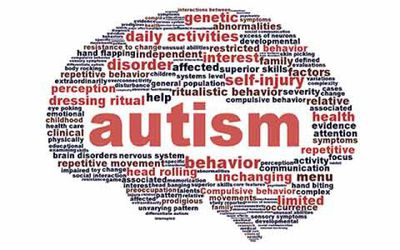The New Possible Breakthrough In Autism
- Written by Jenna Martins

When I was a teacher, which feels more like a lifetime ago than merely years, a boy walked into the class. On the outside he was this sweet looking, dark skinned little boy with brown hair and a lovely smile. It was apparent though, within the first 30 minutes of class, that he was different from the other children. He lived in his own world and when children disturbed him he would cry and scream and go ballistic. One of the most precious days I have had in my past teaching career was dress up day. All the children came dressed up, but not this little one. His Mom said he refused. Eventually, in class, we convinced him to change into his ‘dress-up” clothes, which were that of a knight. He stopped and slowly looked at himself, dressed up as a knight, in the mirror, and then said a single word - “happy”. It was a moment that truly touched my heart. We were never truly able to diagnose this special little boy but we (all the teachers involved) felt he had some form of autism.
The Research
As of November 10, 2017, a research team from the University of Nebraska Medical Center has apparently identified the pathological mechanism for a particular type of autism and intellectual disability. They have done this with the creation of a genetically modified mouse. The team is hoping it could eventually help towards finding a therapeutic fix for autism.
The associate professor of developmental neuroscience, Woo-Yang Kim, Ph.D. led a team of researchers both from University Of Nebraska Medical Center (UNMC) and Creighton University into an exceptionally deep exploration of genetic mutation which actually reduces the function of certain neurons in the brain.
Studies show that autism happens when a first-time mutation causes only one copy of the human AT-rich interactive domain 1B (ARID1B) gene to remain functional. Up to now it has been unknown as to how it led to cognitive and social behaviors that are abnormal.
Autism spectrum disorder (ASD) interferes in the way people touched with this particular condition communicate and interact with others. Up to 75% of people with ASD also suffer with intellectual disability. This is well noticed by the person suffering with this having limitations in cognitive functions as well as adaptive behaviors.
At the moment, no drugs or genetic treatments exist to prevent ASD or intellectual disability. The only treatments that exists focuses on behavioral management and educational, as well as, physical therapies.
Unfortunately mice are often used in science to help for the betterhood of man and this is so in this case. What the team actually did was create and analyze a genetically modified mouse. Their findings were that a mutated Arid1b gene impairs GABA neurons, also known as the ‘downer’ neurotransmitter, leading to an imbalance of communication inside the brain.
GABA stops impulses between nerve cells inside the brain. It’s almost like putting up a brick wall where the nerve cells can’t get through to one another. When there are low levels of GABA anxiety increases as well as mood disorders, chronic pain and epilepsy. It almost pushes away glutamate (the upper neurotransmitter), as the two intervene between each other towards brain activation in a sort of Yin and Yang manner. People who are really stressed out and anxious take GABA supplements. If you are someone that suffers with anxiety Authority Health will lead you to help for this.
Dr. Kim said, “In normal behavior, the brain is balanced between excitation and inhibition. But when the inhibition is decreased, the balance is broken and the brain becomes more excited causing abnormal behavior.”
He carried on saying, "We showed that cognitive and social deficits induced by an Arid1b mutation in mice are reversed by pharmacological treatment with a GABA receptor modulating drug. And, now we have a designer mouse that can be used for future studies."
What lies now in the future is for Dr. Kim and his team to further narrow down the specific mechanism for autism and intellectual disability and to actually be able to point out which of the many GABA neurons are specifically involved.
Final Thoughts
This leaves me wondering how many ways GABA does in fact affect the brain not only in autism but also in mood disorders and the general feeling of literally being “well-balanced” and feeling good. It will really be interesting to see what happens with this. If autism can truly be treated it will be amazing what the autistic will finally be able to say. Some of them, who live in their own world, truly are geniuses and see solutions completely from out the box. I will definitely be keeping an eye out for more information regarding this!




